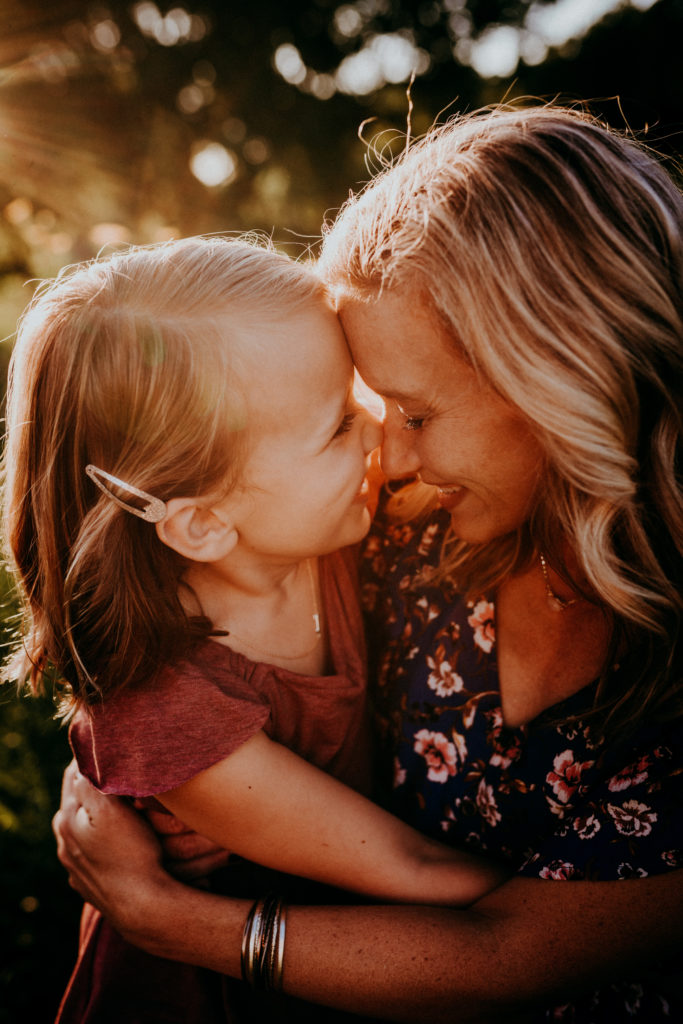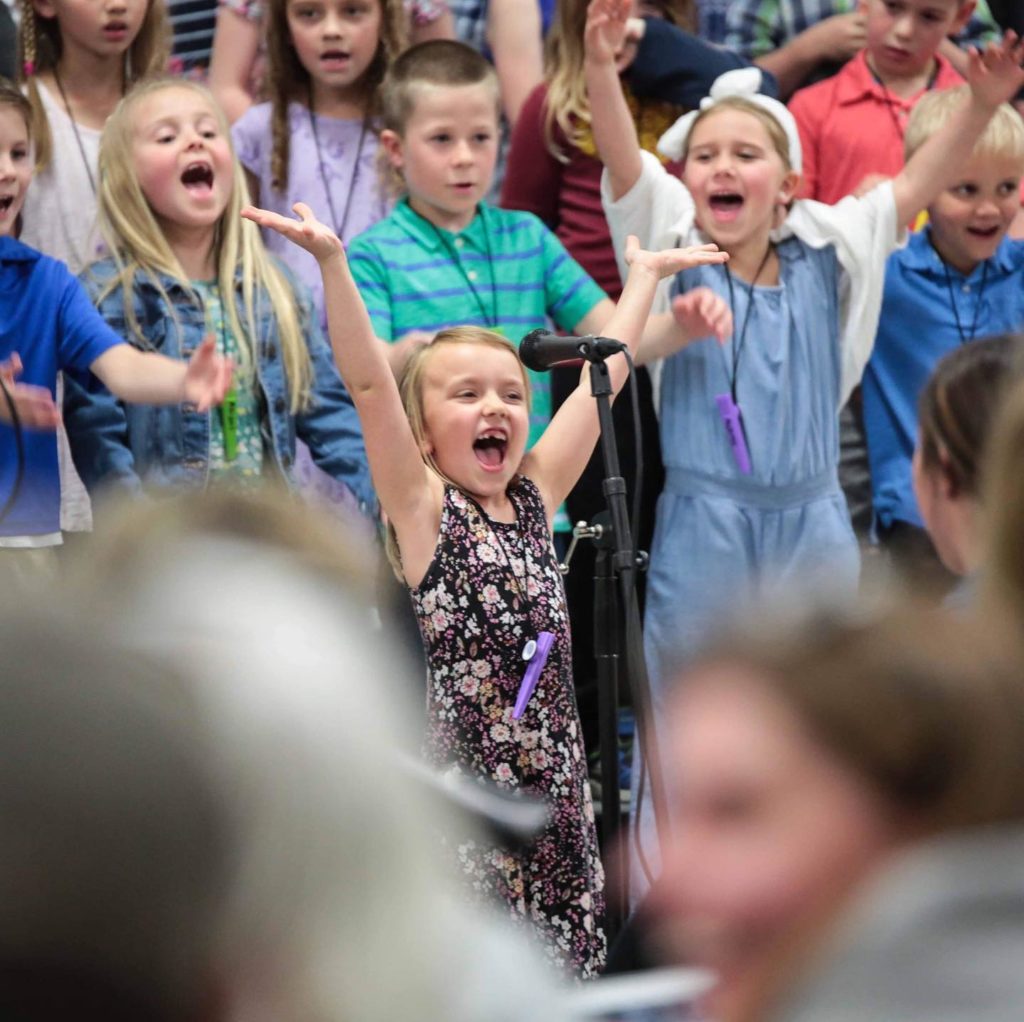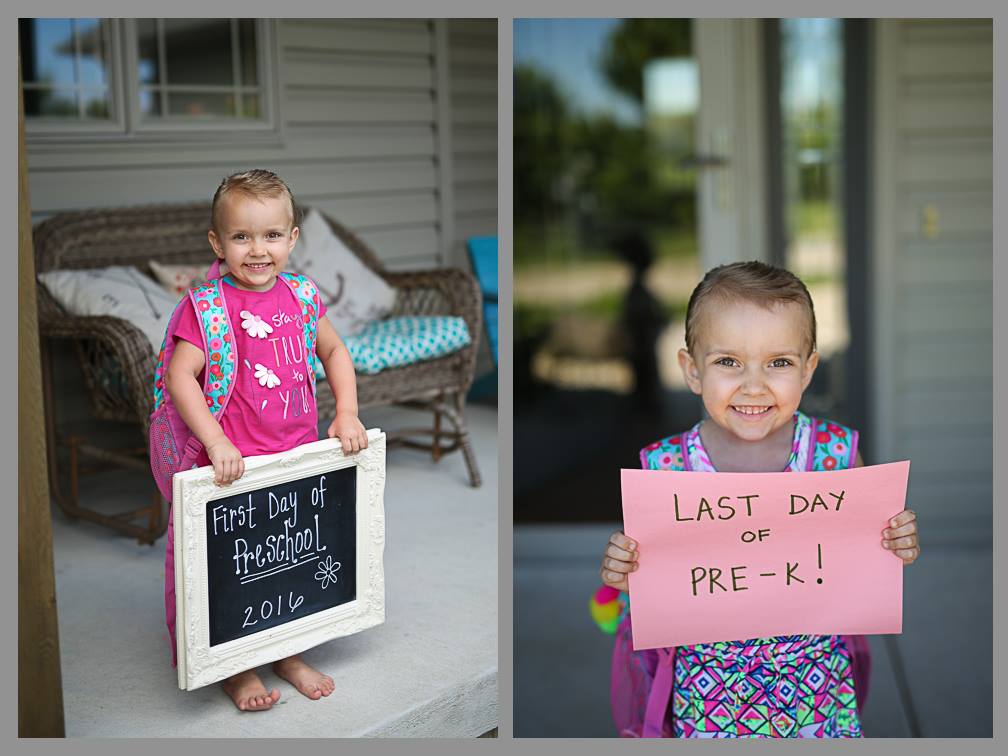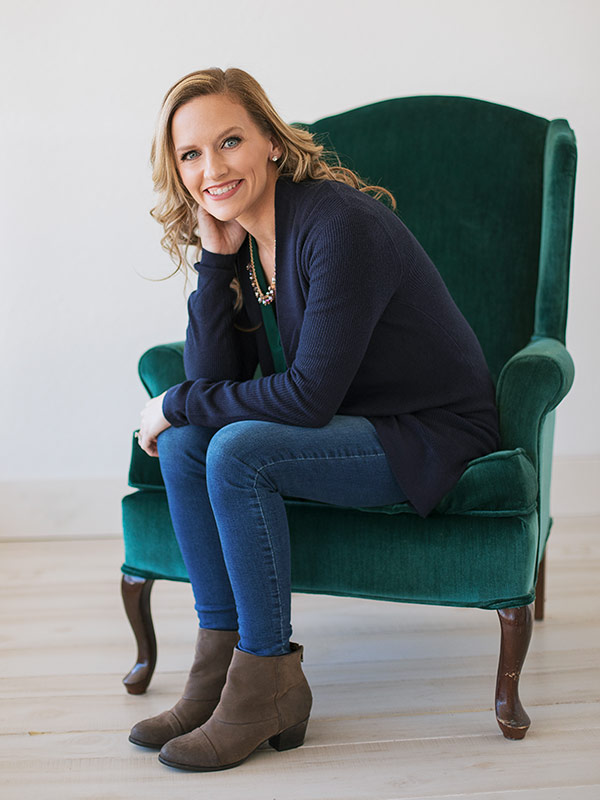The first week of the new school year always brings so many emotions. Seeing all of the smiling first day pictures show up on my social media feed this year reminded me that not everyone’s first day is always met with confidence and smiles. While I hope that you can’t relate to this post at all, if you were the parent this week who did everything you could to help your little one through anxiety about school starting up… I’ve been there too. I’ve been the mom who had to post a “we made it through the first day” picture instead, because the tears just wouldn’t stop long enough to take a picture in the morning. It’s hard. It’s hard on those sweet kiddos who are dealing with these big emotions and on the parents too (trust me, I know).

photo by Melissa Winters Photography
Our journey with anxiety all started when my oldest daughter, Ensley, was getting ready to start preschool a few years ago. I expected some tears and all that typically goes along with that dreaded first day drop-off, but her worry continued to be pretty extreme well after the first day. Our usually confident and happy little girl started having trouble sleeping at night and since she was in afternoon preschool, she would spend the entire morning at home worrying. She would be anxious from the moment she opened her eyes in the morning. She would follow me around the house and ask me the same questions over and over again about who would be picking her up and what her schedule would be like, until she exhausted herself and it was time to go to school. After weeks of tears (from everyone!) we realized that this was more worry than normal, and as a parent it was extremely difficult to see her little heart under so much constant stress.
Before I go any further into writing this, I want to say that I am in no way an expert on the topic of kids and anxiety. In fact, some of my weakest parenting moments that I wish I could forget came from learning how to deal with these issues and navigating our way through them. My personality is one where I want so badly for everything to just be fine so that we can move on and continue doing life the way we always have, so actually slowing down long enough to recognize the issues we were having took me longer than I care to admit. So if you continue reading this, know that learning about what might help was a journey for us (and still is!) and our success in conquering some of these feelings Ensley was having was a group effort between some amazing teachers, lots of research, and trial-and-error from parents who wanted nothing more than to make our little girl feel better.
Anyway, Ensley is now in third grade and her entire outlook on school is a positive one. We still deal with anxiety issues that come up from time to time (ie: mainly with changes in schedules, field trips, new experiences), but in general – we at least have a handle on how to help her through them. I wanted to share some of the resources and ideas that truly made a difference for us. And also, very importantly, I wanted to talk a little bit about this to let other parents know that you’re not alone. Helping our kids figure out these big feelings is not an easy job. So if you’re in the middle of this too, I’m sending you the biggest hug. Here’s my super real/not-professional take on ways to help.
VALIDATE FEELINGS: I cringe a little writing this, because I know that in the beginning I messed up big time on this part. If you’re trying to help a kiddo with anxiety, one of the very first things to know is that dismissing their feelings and telling them “you have nothing to worry about!” or “why are you even worried?” doesn’t make it better. And if you do this too, I totally get why. It’s coming from a place of love – you want to reassure them that there is no reason why their little hearts should be so worried. But in reality, I’ve learned that replacing these sentiments with validation of their feelings goes a long way. Instead try saying “I can see that you are really worried about this. That’s okay, I feel anxious sometimes too when I’m doing something new,” and then go on to try and help calm their feelings. I have found that starting with this validation keeps them more open minded as you offer suggestions.
MEDITATION: I know, right? Maybe you’re thinking this sounds a little too… holistic, or not like a concrete answer to a problem? But let me tell you that it truly has been a lifesaver for us in many situations. It’s worth researching a little bit. Our personal favorite is www.simplysadiejane.com. We love the kid-friendly meditations from her, and actually do the bedtime one every single night to this day. It forces a slow down, makes us concentrate on breathing, and the message is always so good. Learning more about meditation actually taught me about positive affirmations for kids, which I also find super helpful for on the way to school or when they just need an extra boost of confidence. Even if you have a kiddo who isn’t struggling with school anxiety, I’d even recommend checking this out for other worries that might come up. Another instance where we use these is right before we head into a doctor/dentist appointment.
COMPLIMENT GAME: Speaking of positive affirmations for kids, one of my favorite “on the way to school” things to do is play the compliment game. The idea is super simple but it’s where each person in the car gets a turn going around and saying one nice thing or compliment about everyone else in the car with them. It’s simple, cute, and what kid doesn’t need that extra shot of confidence to start their day? If your little one is particularly anxious on the way to school, it also helps to redirect their thoughts to something else. You will be so surprised by how sweet some of their compliments are and I guarantee everyone will be smiling by the end of the game.
 SOCIAL STORY: Especially if your little one hasn’t been away from you all that much (which is most kids right now living in this crazy 2020 world), their anxiety might be made worse by having to leave you, or worrying about what you’re doing without them while you’re gone. From teacher suggestions, our best approach to this was helping Ensley realize that she’s not missing out on anything fun while she’s apart from us. Her amazing teachers even helped out by creating a social story book with photos of people she loved “working” or doing their jobs that they do while she’s at school. It helped her to accept the idea that going to school is like her job that she does while we do our jobs, and then we all come together again to have fun at the end of the work day.
SOCIAL STORY: Especially if your little one hasn’t been away from you all that much (which is most kids right now living in this crazy 2020 world), their anxiety might be made worse by having to leave you, or worrying about what you’re doing without them while you’re gone. From teacher suggestions, our best approach to this was helping Ensley realize that she’s not missing out on anything fun while she’s apart from us. Her amazing teachers even helped out by creating a social story book with photos of people she loved “working” or doing their jobs that they do while she’s at school. It helped her to accept the idea that going to school is like her job that she does while we do our jobs, and then we all come together again to have fun at the end of the work day.
VISUAL OF THE DAY: For kids who have anxiety, knowing what to expect is very comforting for them. When Ensley was younger, I used to print out a weekly calendar where I’d include pictures of what her day might look like. I’d put a picture of her teacher on the days that were school days, add other graphics to show her fun things to look forward to on the weekends, etc. It really helped her to get a sense of what was coming up next. We took this a step further also by working with her teachers to give her a visual of the school day while she was there. Being able to see the day sectioned off into events gave her a feeling of control, since she knew what to expect next. This was as simple as a timeline of the day which visually showed getting to school, her morning meeting, specials for the day, etc. all the way until the school day ended.
FEELINGS JOURNAL: For feelings of worry that crept up while at school, Ensley’s teachers were always so great about offering her a feelings journal or a way that she could let them know how she was feeling without also alerting everyone in her class. If you can’t tell, I’m forever grateful to her teachers who were truly instrumental in helping us navigate this. Her feelings journal was a notebook in the classroom where she could go to write/draw about how she was feeling. The reports from school were that she’d use the journal whenever she felt like she needed it, and then it gave her the chance to name her feelings (or draw them), and then gave her the sense that she could then move on with the day. My favorite reports from school were when the teacher started letting me know that she hardly ever used the journal anymore.
ROUTINE: You might already know by now that routine is like a double-edged sword when it comes to helping kids with anxiety. It’s great because it offers predictability which can ease feelings of worry sometimes, but it also provides a precursor to the anxious feelings as well when they tend to happen with the same triggers or at the same times each day. I’ll give you an example… in getting ready for school in the morning, we found that whenever Ensley would go to pick out her clothes for the day she would start feeling worried and then that would come out in the form of crying because she couldn’t decide what to wear. That was our clue that we needed to change up the routine. We started picking out clothes the night before for a while and that seemed to break the cycle of the anxiety that was always triggered by the same thing each morning. Another example would be doing the exact same bedtime routine each night, and then you notice that whenever it’s time to brush teeth and go to bed that the anxiety kicks in and then prevents your kiddo from sleeping well. If this is the case, remove the trigger or re-arrange the evening so that maybe they brush teeth before you read a book now instead of after – and that change in sequence almost doesn’t allow their minds to fall into the rut of worrying.
BOOKS: There are quite a few really great books for little kids that help with easing anxiety or help your little one recognize their feelings better. Some of my favorites are: What To Do When You Worry Too Much and A Little Spot of Anxiety. The premise of a lot of these is to recognize the feelings, and then help your kids figure out a way to put them in their place so they can move on. Sometimes the ideas are to put them in an imaginary worry box, or to move them to a calm spot, or even to exhale them out in breathing exercises.
WEIGHTED BLANKET: I mentioned this a little bit above, but trouble sleeping at night is a pretty common issue in kids that worry a lot. I think I could write a whole other post on sleeping/bedtime in particular, but one thing that we use and really like is a weighted blanket – we call it a “hug blanket.” They aren’t just for babies (which is kind of what I thought… you should see how many of them are marketed towards adults too!) and they do seem to offer some added comfort at night and help kids stay sleeping. Here is a link to the one we like the best because it’s breathable and not too hot.
Okay, so I know that’s a lot of information. But if you ever find yourself in the position to need it, this can at least be a starting point for you. I hope that this list gives you a few ideas to try! I’m always looking for new ideas too as every kid and every stage is different and all we can do is help them through these big feelings until they learn to manage them on their own.
Good luck!
Love, Erin
Note: I talked to Ensley about this post (she’s 8 and a half now) and she was okay with me writing about this and sharing her story along with things that helped her.


